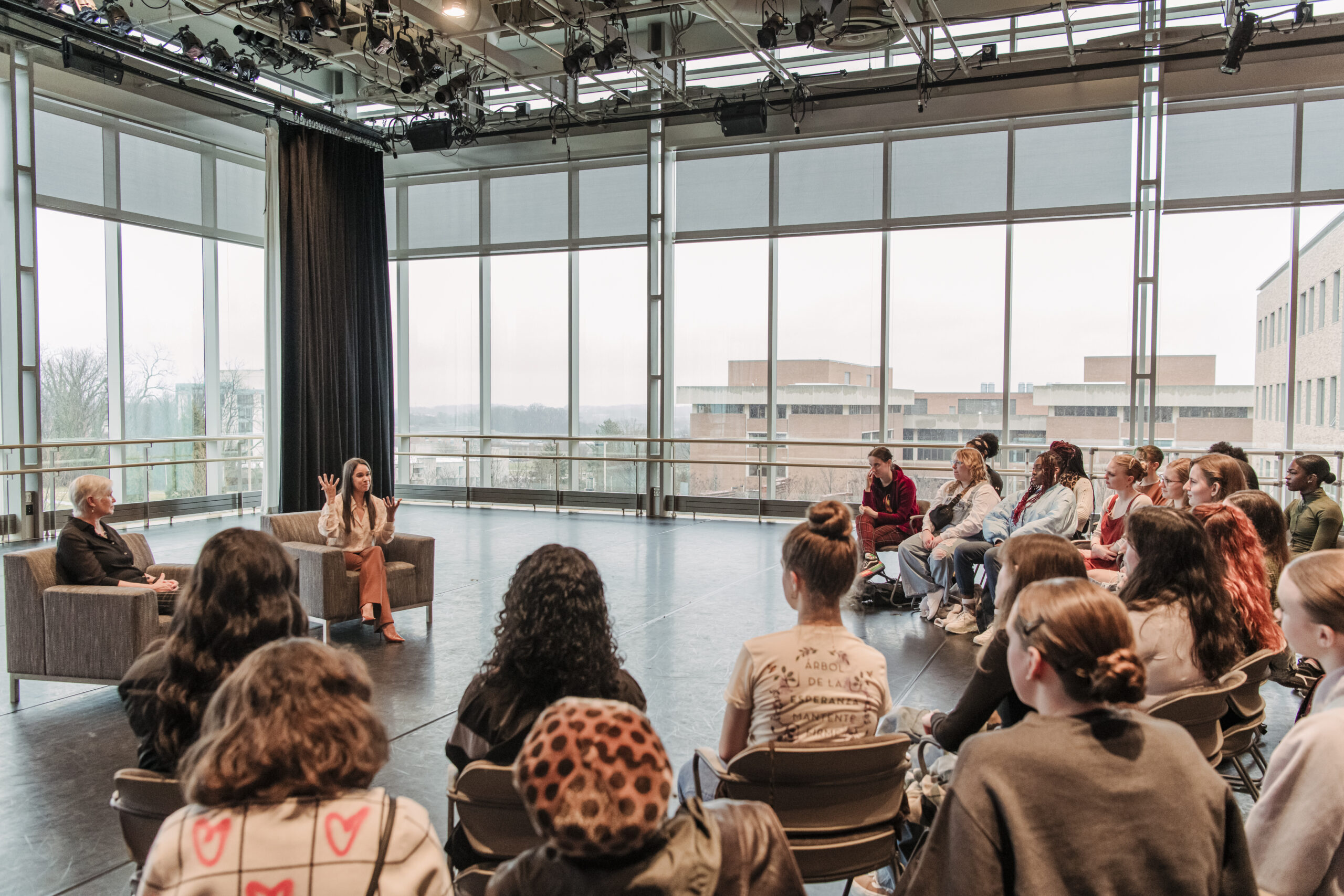By Lisa Traiger
Misty Copeland is a ballerina on a mission—and last week she brought that mission to UMBC. Renowned for both her ethereality and powerful muscularity, as well as her activism in diversifying a white-dominant field, in 2015 Copeland became the first Black woman promoted to principal dancer at American Ballet Theatre, a top U.S. ballet company. And she continues to break down barriers to democratize this art form born of European privilege and monarchy.
On March 6, Copeland spent a day on campus—meeting with dance majors in the Dance Cube, speaking one-on-one with alumni and young dancers at a reception, watching student dancers perform, and participating in UMBC’s first annual Artful Conversations, a public Q&A in Linehan Concert Hall.
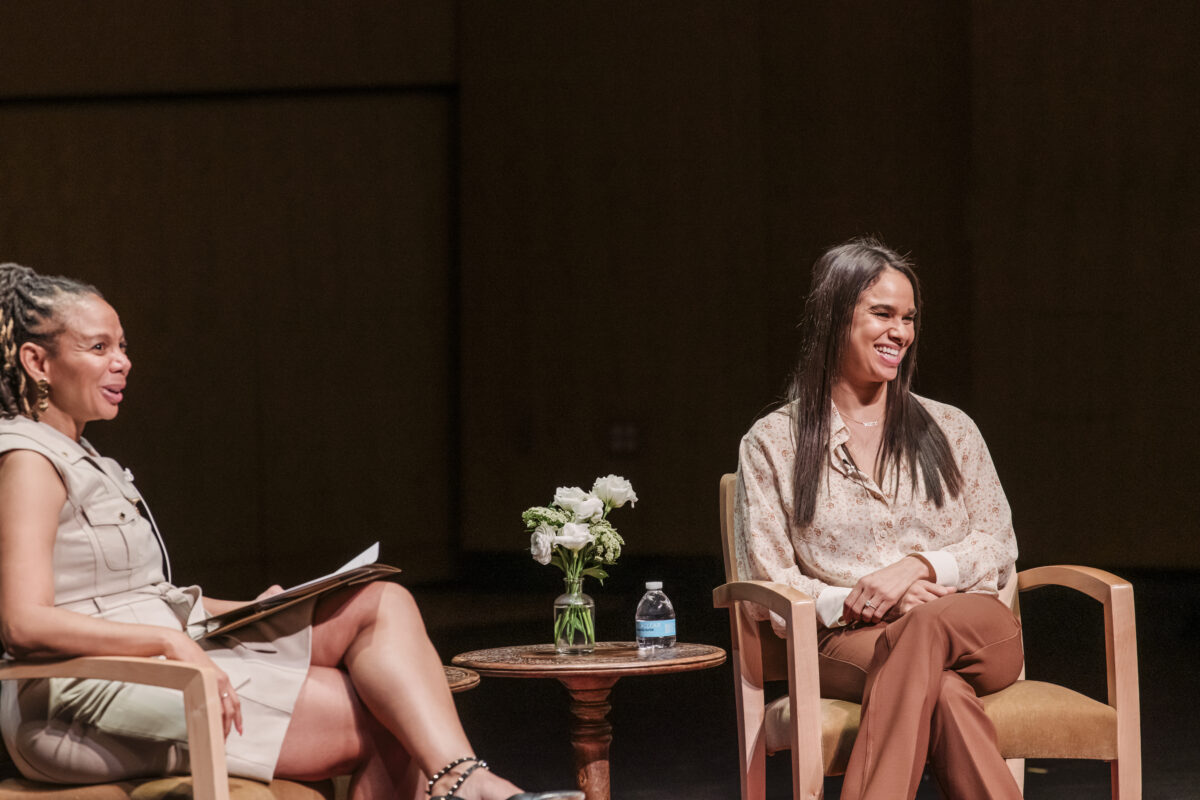
“You are my people,” the lithe dancer in smart slacks and stilettos told about 35 UMBC dance students and prospective students in an afternoon session. “I came into the ballet world at a late age—13,” she said, recalling her first ballet classes sponsored by a YMCA Boys and Girls Club in a gymnasium. She wore socks and shorts and had never heard classical music before. What she initially described as a “weird” experience, soon became an epiphany. “I felt so free… I was very shy. I didn’t have the tools or the confidence to say everything I wanted to say at 13, but I realized this might be the last time I had this chance,” said Copeland. “So I always took advantage of every opportunity I’ve been given.” And through ballet, she found her voice—and purpose.
Breaking ballet’s glass ceiling
Raised by a single mother, she and her five siblings were sometimes “house-less,” as Copeland described it. The ballet studio “was the first time I felt physically protected in a space and I could be naked and vulnerable,” Copeland said. “That’s the feeling we should all have: what it’s like to be in a space of freedom and creativity and no judgment.” These days through her eponymous charitable foundation, Copeland supports programs that provide funding and classes that break ballet’s glass ceiling through diversity, equity, and inclusion activities.
Victoria Davies, a junior dance major and Linehan Artist Scholar, performed in “Boundless” by faculty member Shaness D. Kemp, one of three modern works dance students shared with Copeland and attendees during the early evening public event in the sold-out Linehan Concert Hall. “For me,” Davies said, “to see another person of color who has been very successful in her dance career and hear about all the things she went through, hopefully I can get to that point in my own career.”
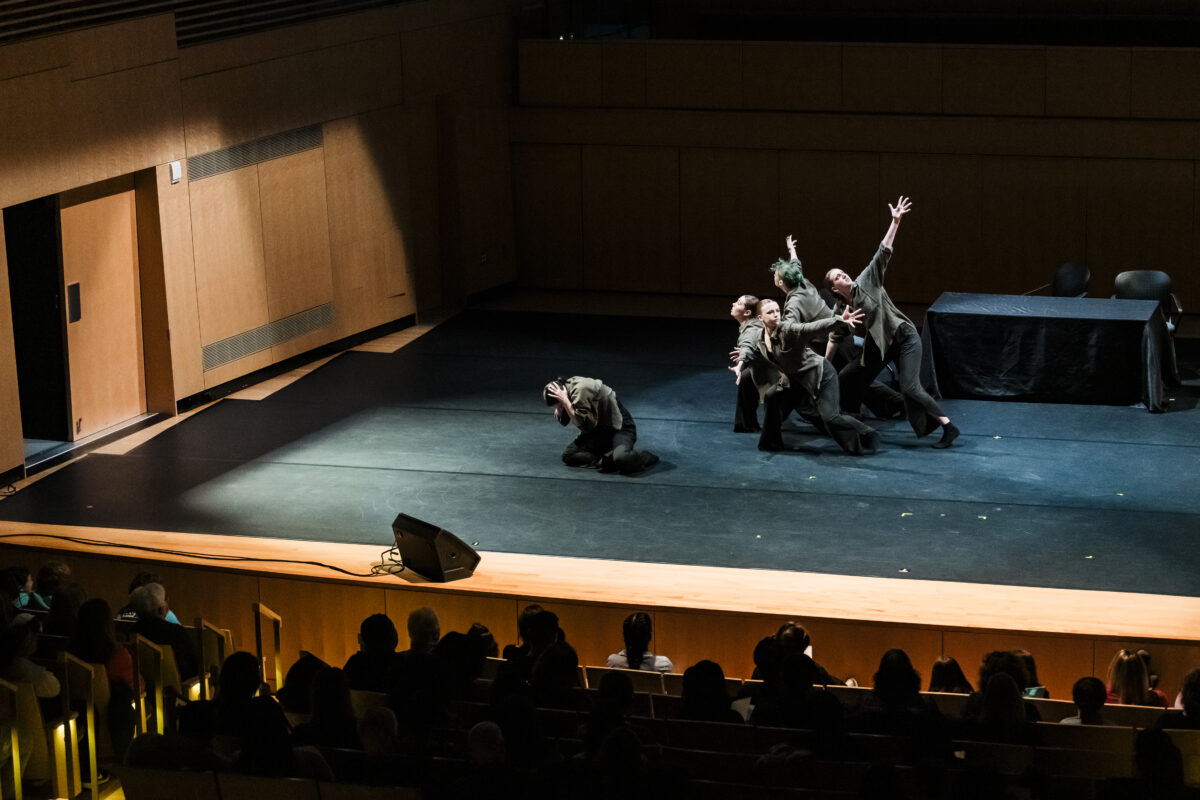
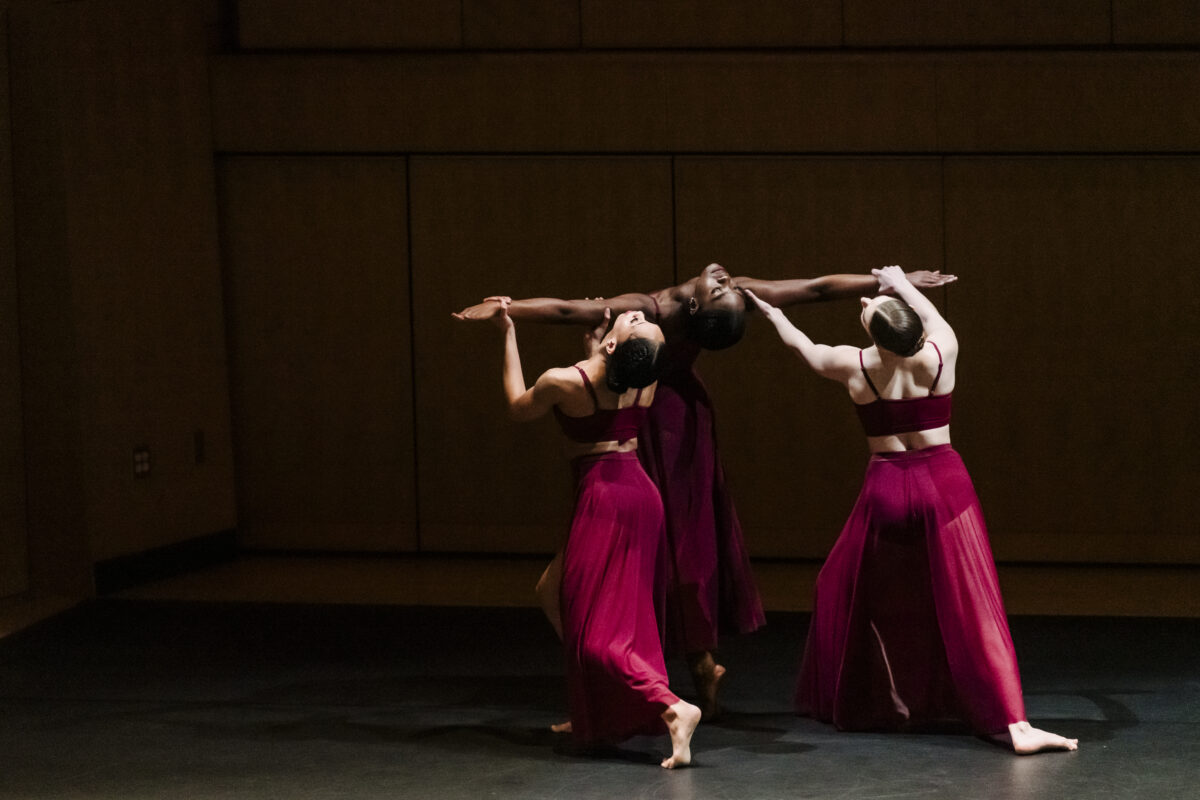
Left: Capstone work by dance major Eva Mclaughlin, “Episodic Abrasion” (dancers: Sarah McHale, Cassidy Cipolla-Milchak, Ria Murphy, Katelyn O’Connor, Gwyneth Watson). Right: “Boundless” (2022) repertory work by Assistant Professor Shaness D. Kemp (dancers: India Blake, Victoria Davies, Sophia Papparotto.) (Marlayna Demond ’11/UMBC)
First-year dance major Ashley Baer said that learning more about Copeland “makes everything so much more real. She has been so influential to so many. As dancers, it’s so amazing to be able to hear her perspectives on performing and life.” Baer shared a quote she jotted down from Copeland’s talk: “’Continue to explore life and live your life…. As dancers we get so caught up in our training and we need to continue to live life.’”
Ask for the roles you want
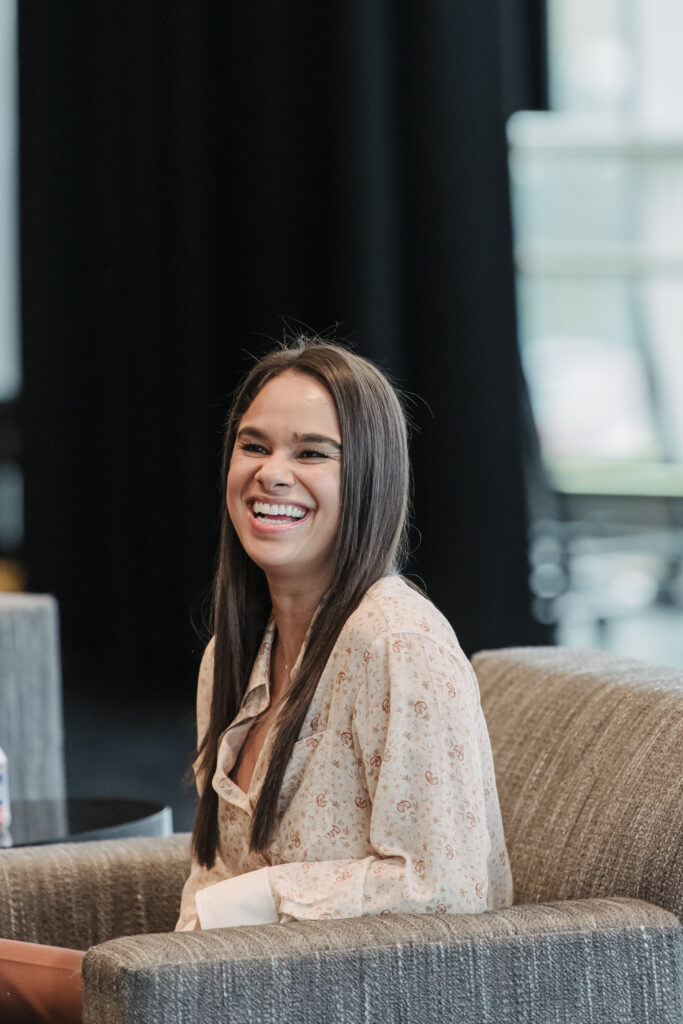
Students asked Copeland about her challenges, transitioning from student to professional, taking care of her body, work-life balance, and dealing with microaggressions as one of the few Black women at the top of the ballet company hierarchy. She was frank, yet gracious, in her responses, noting she moved to New York the day after graduating from high school and it took her about five years to understand the complexity of rehearsal and casting schedules. “Having a support system has always been key,” she advised. “You need people you can turn to. This [career] takes a lot out of you, physically, mentally, emotionally.”
One lesson she learned from her close friend and mentor, the late African American ballet dancer Raven Wilkinson: Do not be afraid to ask for roles you want. Copeland desired a specific role, but had never been cast. With Wilkinson’s encouragement, she approached American Ballet Theatre artistic director Kevin McKenzie and asked. His response: “Oh, I thought you had danced that role.” Then she was cast. She noted: “As a woman, as a dancer with a Black body…it felt like [my success] was this collective effort of all my ancestors. It never felt like my accomplishment singularly.”
While Copeland hasn’t been back in the studio since the birth of her son two years ago, she remains active on other fronts: as an author of now six books for children, teens, and adults, and as designer of her own line of athleisure wear, Greatness Wins, in collaboration with athlete Derek Jeter. As well, she acknowledges the ongoing importance of being a ballet dancer.
Stars aren’t made overnight
According to College of Arts, Humanities, and Social Sciences Dean Kimberly Moffitt, who moderated the public Q&A, Copeland proved the perfect choice to inaugurate Artful Conversations, which will invite a high-profile creative to campus annually. “First and foremost, I want my dance students 10 years from now to say, ‘I had the chance to interact with Misty directly,’” Moffitt said. “That’s a special moment from their academic experience here at UMBC.” She continued, “And other students who are drawn to attend will learn something really interesting about Misty’s trajectory to becoming not just another ballerina. She has a really interesting story to tell. Often, we believe that these [stars] are overnight successes. We forget how much work, effort, and energy individuals put into making it.”
Introducing Copeland, Dawn Moore, first lady of Maryland and an advocate for the arts across the state, said, “We have gathered to celebrate the power of dance to inspire and unite…[because] dance nurtures compassion, contemplation, and healing.”
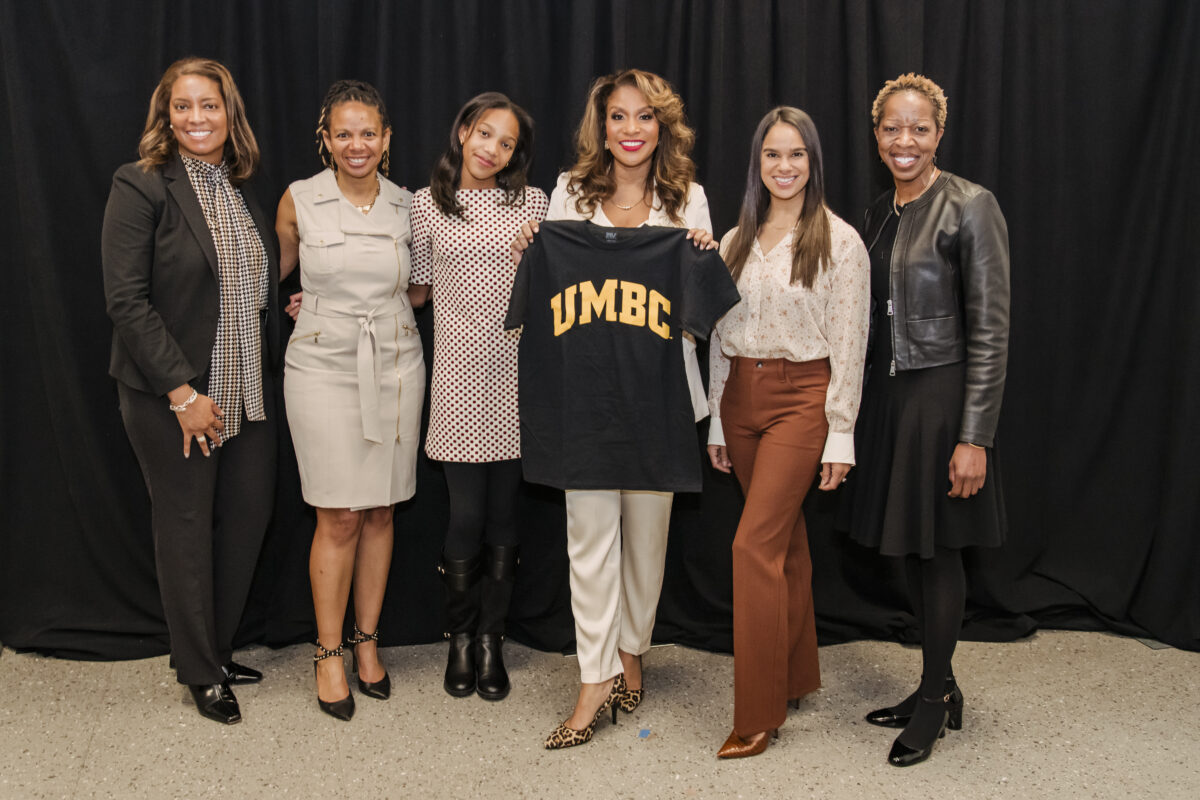
And Copeland left the dance students of all ages with this message: “As a dancer, it’s so easy to get caught up in the minutiae of daily battles, and a lot of those are within ourselves. Every day, it’s important to remind yourself why you’re doing this. I love being on stage—it’s where I feel the most free. It’s liberating. You need to remind yourself of the things that matter to you.”
Learn more about UMBC’s dance and Linehan Artist Scholars programs.
Tags: CAHSS, Dance, Linehan Artist Scholar

